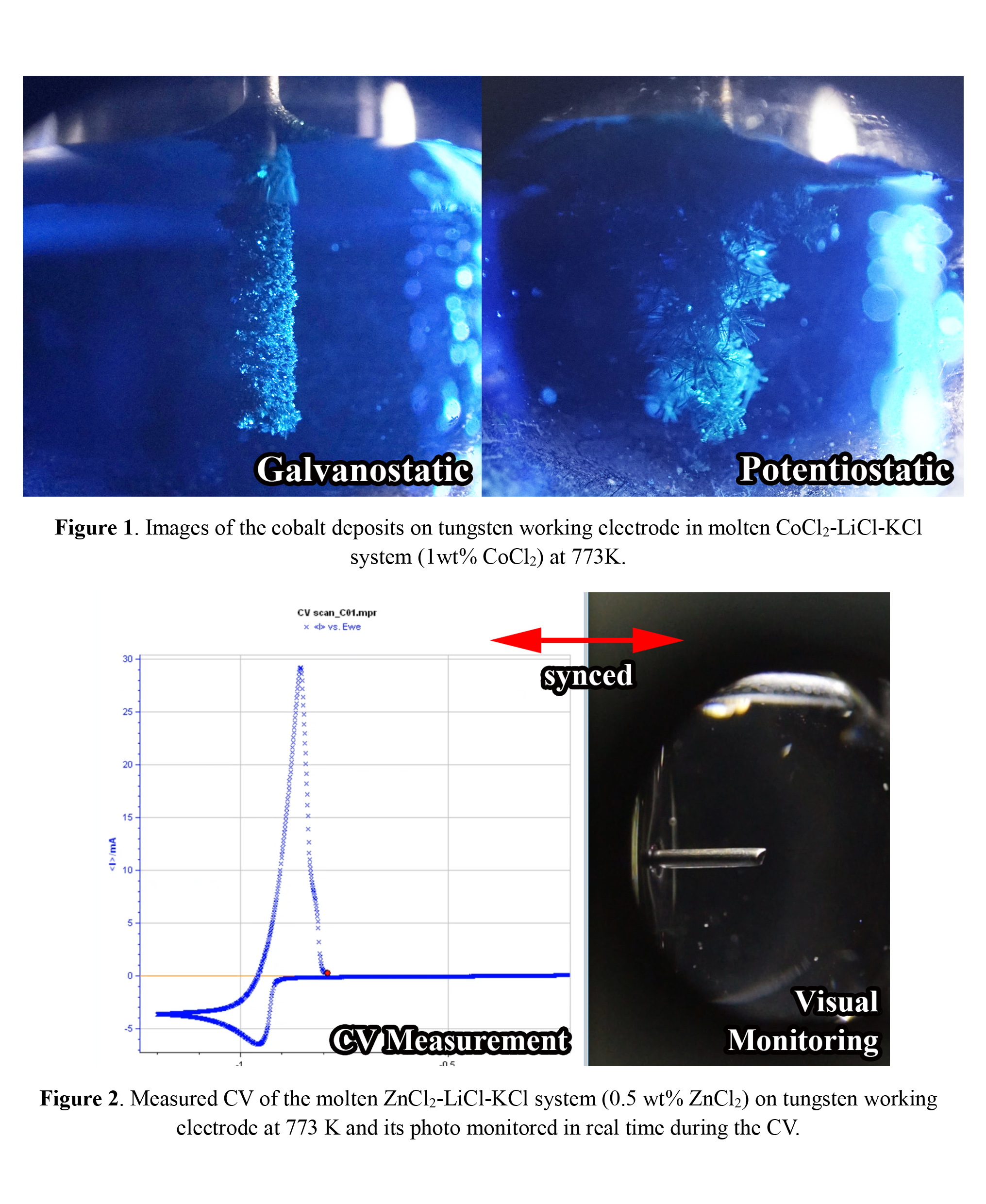Abstract
Molten salts are one of the promising alternative classes of new materials for electrochemical processing. They have high chemical stability and offer much wider electrochemical window than conventional aqueous media. This enables various electrochemical reactions to be conducted without decomposing background media. In addition, the high operation temperature of molten salt boosts the mass transfer of reactant of electrochemical reaction, so that the processing time is shortened. Owing to such advantages, the molten salt media have intensively dealt with the electrowinning of metal and electrochemical separation processes. However, knowing the chemical behavior of electrodes during such processes is crucial to understanding the mechanism of electrochemical reactions that occur during the process. One of the most powerful methods of examining the system is to monitor the visual status of electrodes in real time while the electrochemical process is running. However, due to some practical limitations, it has rarely been applied to the molten salt electrochemical system.
In the present work, the real-time monitoring system for molten LiCl-KCl eutectic salt medium is set up. Instead of an optically opaque ceramic crucible, a cylindrical quartz tube is chosen for the electrochemical cell of our experimental system. With four optically accessible quartz windows mounted on the electrical furnace, a commercially available CMOS camera can be installed externally to monitor the molten salt system without any special modifications.
Real-time monitoring was carried out to investigate the electrode behavior in various electrochemical systems. First, the deposition behavior of cobalt in molten CoCl2-LiCl-KCl system (1wt% CoCl2) is compared on a tungsten working electrode. As shown in Figure 1, there is a clear morphological structural difference in the cobalt deposit between the galvanostatic and the potentiostatic electrodeposition. While the metallic cobalt was deposited evenly on the surface of the working electrode by galvanostatic electrodeposition, rapid growth of the dendritic structure was observed using the potentiostatic electrodeposition. This suggests that the structural properties of deposits can vary significantly due to the nature of the electrodeposition methods.
In electrochemical experiments in molten salt system that do not produce solid phase products, it is difficult to elaborately understand the behavior of chemical species during the experiment. However, real-time monitoring enables noteworthy observation from these experiments. During the galvanostatic lithium reduction in the molten LiCl-KCl system, the liquefied metallic lithium formed the oval bulge on the surface of the tungsten working electrode. At the same time, the unknown indigo-colored flow was observed on the surface of the deposited metallic lithium. The clear mechanism remains to be explored, but it appears to be related to the re-oxidization of metallic lithium to Li(I) ions. In the molten ZrCl4-LiCl-KCl system (1wt% ZrCl4) with tungsten working electrode, the reduction of Zr(IV) ions to Zr(III) ions during the potentiostatic electroreduction was visualized and identified by the formation of brown-colored flow near the surface of the working electrode. This confirms the result of our previous work and suggests that Zr(IV) is reduced to Zr(III) with a brown color in the first step of CV [1].
Furthermore, with the video signal from the CMOS camera to the PC that controls the potentiostat, the visual changes can be synced with the measured current or potential during the experiment. This enables us to compare the visualized morphological properties on the surface of the working electrode under different applied potential conditions during the CV experiment (Figure 2).
[1] H. L. Cha, J.-I. Yun, Electrochem. Commun. 84, 86 (2017)

Figure 1
